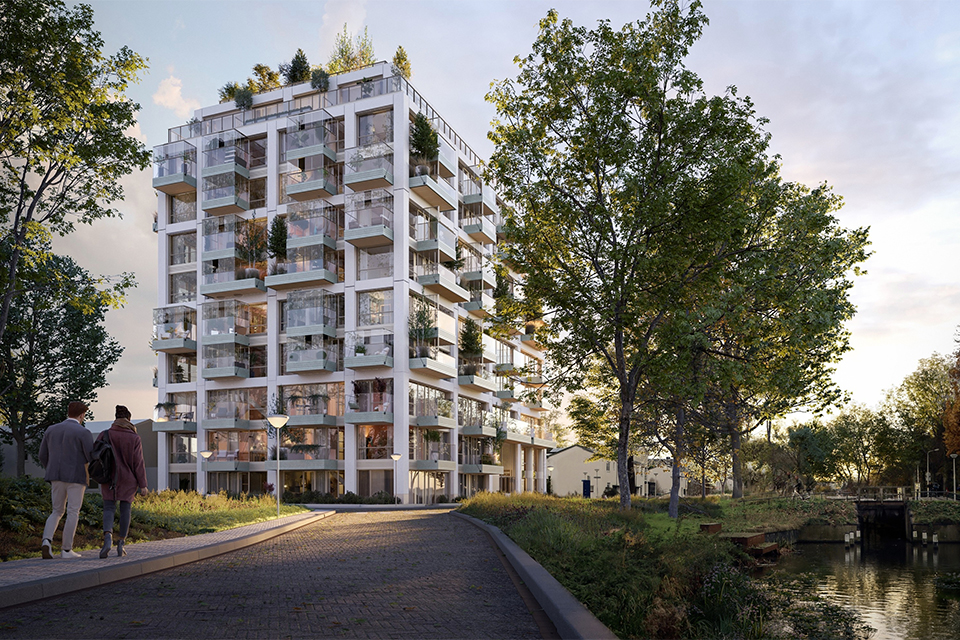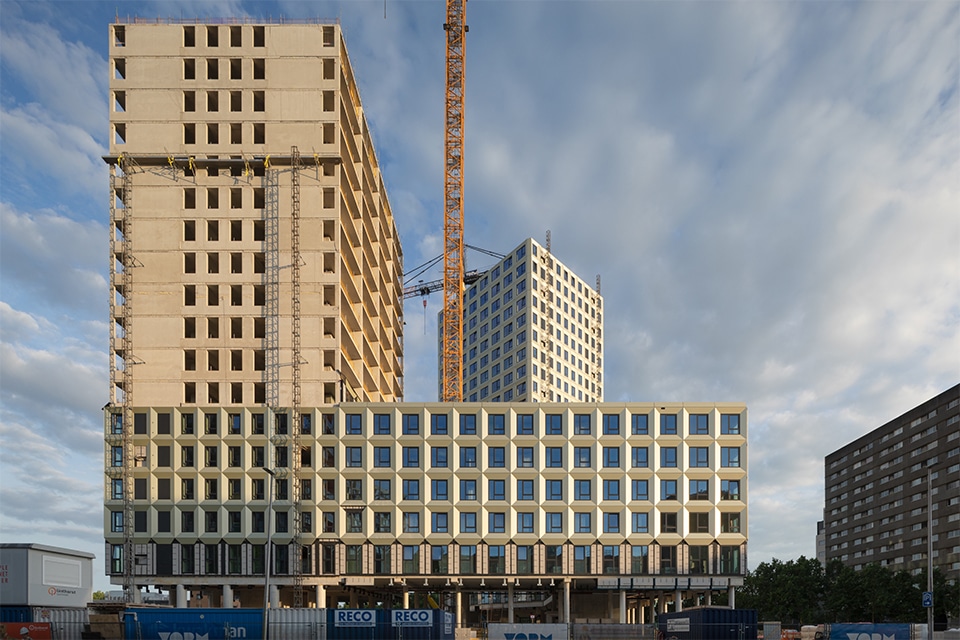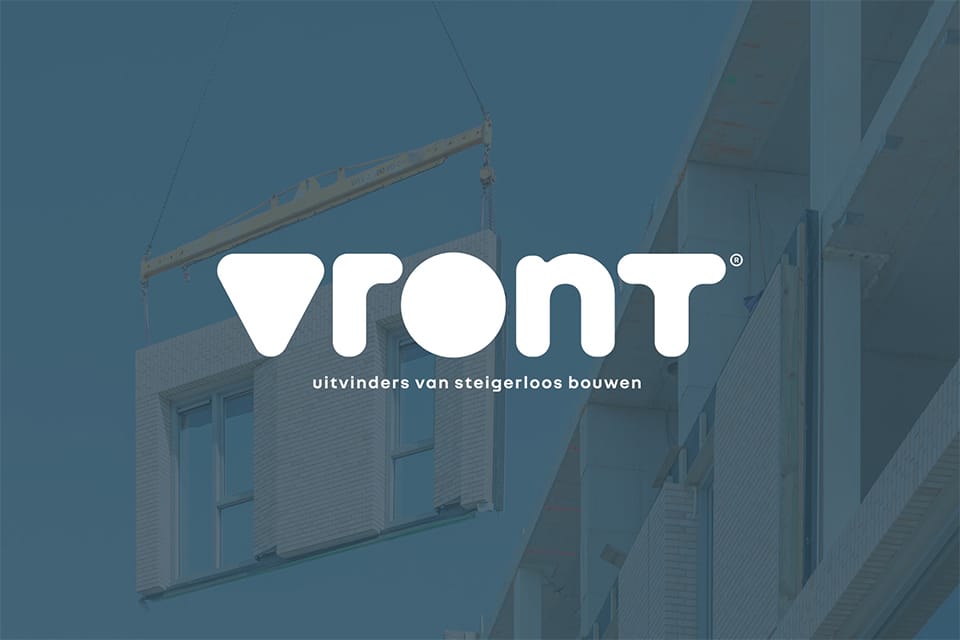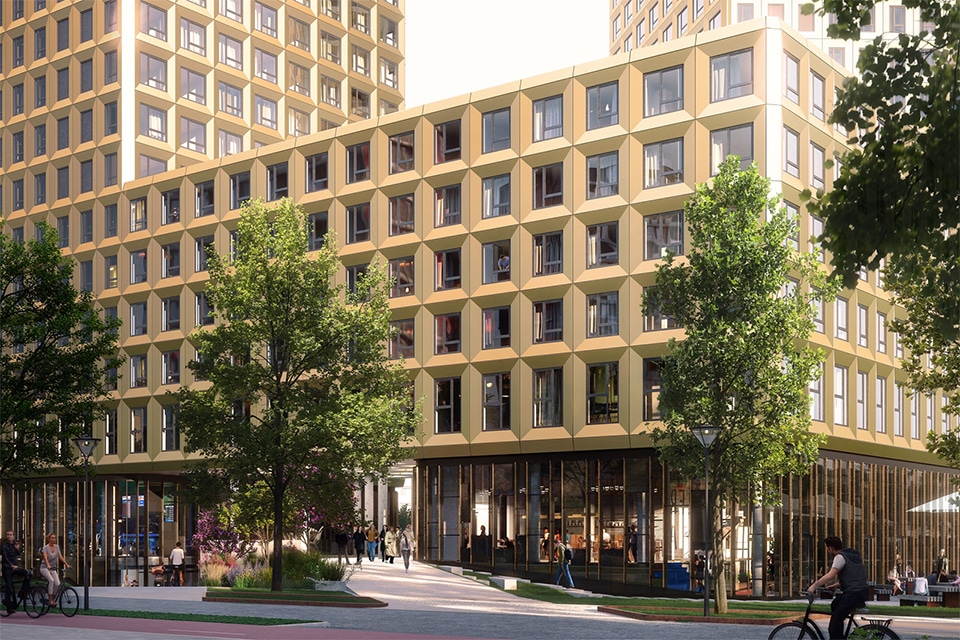
Transformation former GAK building Amsterdam
Initially, demolition seemed to be the ultimate solution. Then the developers wanted to keep the GAK building as an office building and modernize it in particular, but that plan fell through due to the real estate crisis. And so it took 16 years to transform the GAK building into a modern residential building. It became haute couture for young urban people.
Text | Liliane Verwoolde Image | Stijnstijl Photography
For the executing parties, determining the new purpose of the GAK building - on the edge of Bos and Lommer - was just the beginning. How could they preserve the monumental value of the postwar building while making it comply with modern building regulations? To make the colossal building manageable, it was first split into a north, middle and south wing. WDJArchitects then transformed the side wings into some 651 28-square-meter owner-occupied studios on a commercial plinth. Zecc Architects designed a hotel function with 120 rooms/short-stay apartments for the middle section.

The transformed GAK building offers haute couture for young urban people.
Conservatory facade offers solution
"The building definitely had advantages," says Wessel de Jonge, architect-director of WDJArchitects. "For the year of construction (1959), the design was ultra-modern. It had sun-absorbing insulation glass and was equipped with air conditioning and a thermal storage system. Therein lay our opportunities to preserve the facade with modifications for today's requirements of safety, sound insulation and ventilation. We gave the studios on the A10 side a "conservatory facade," or a "double facade," with which we suddenly met all the requirements. With parallel opening windows, the residents can also ventilate extra. Thanks to this solution, the new facade differs only millimeters from the original!"
An outstanding EPC
To make the studios fire and sound resistant, WDJArchitects designed the studios as separate boxes, each with a lowered insulated ceiling and a raised insulated floor. To prevent leaks, the new walls were carefully connected to the existing facades. Sustainable thermal storage did the rest. De Jonge: "This is how the EPC went from D to B. An outstanding result for the given situation." Striking color schemes per floor increase the recognizability of the general areas.
Reclassification
It was Zecc Architects who designed the contemporary short-stay hotel in the middle section. And that while the elongated spaces had nothing like an attractive hotel room. "We solved that by focusing on co-living," explains architect Bart Kellerhuis. "For example, for parents with children or two couples of friends. These now have two double bedrooms with their own bathing facilities and in the middle a shared living room and kitchen."

The side wings were transformed into owner-occupied studios.
New eye-catchers
The large former escalator center at the heart of the building was also tackled with creativity. "We wanted to create light and space here," says Kellerhuis. "Now a stunning corten steel stairwell in a high, light-filled void refers to the original robust escalators and complex steel construction. The stairs, for example, have the same rounded corners. We replaced the closed chimney - also a blockage to the reconfiguration - with a transparent one. Perhaps we have surrendered charms of the original building, but if so, beautiful, contemporary eye-catchers have come in return."
Project info
Principals side wings AM and Woningbouwvereniging Stadgenoot, Amsterdam
Client centerpiece SteenVastgoed, Amsterdam
Architects WDJArchitects, Rotterdam and Zecc Architects, Utrecht



